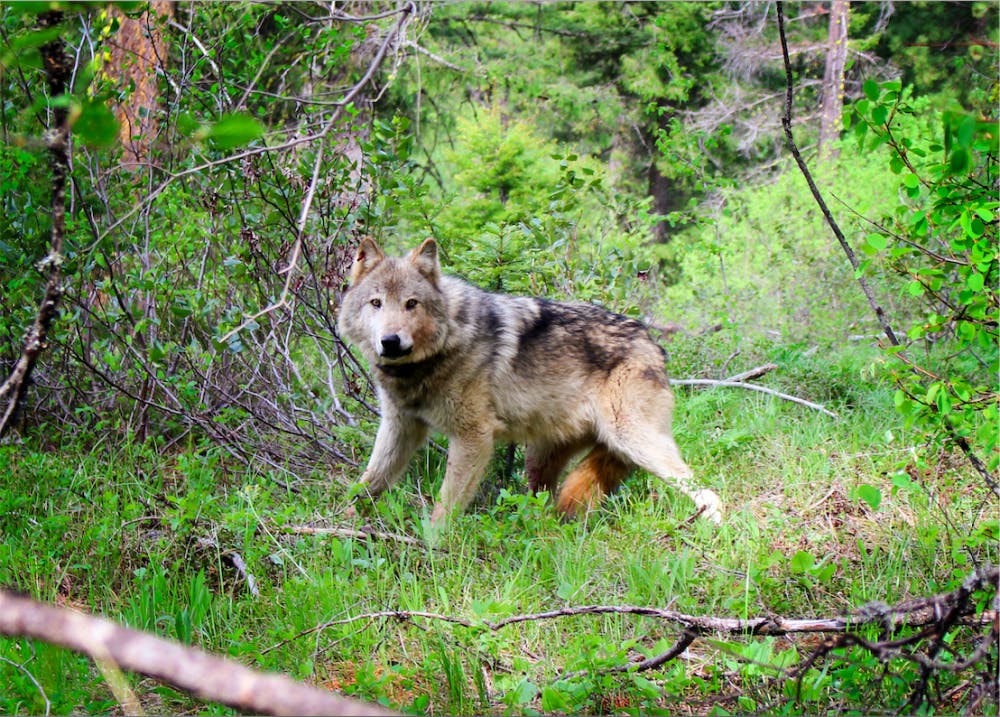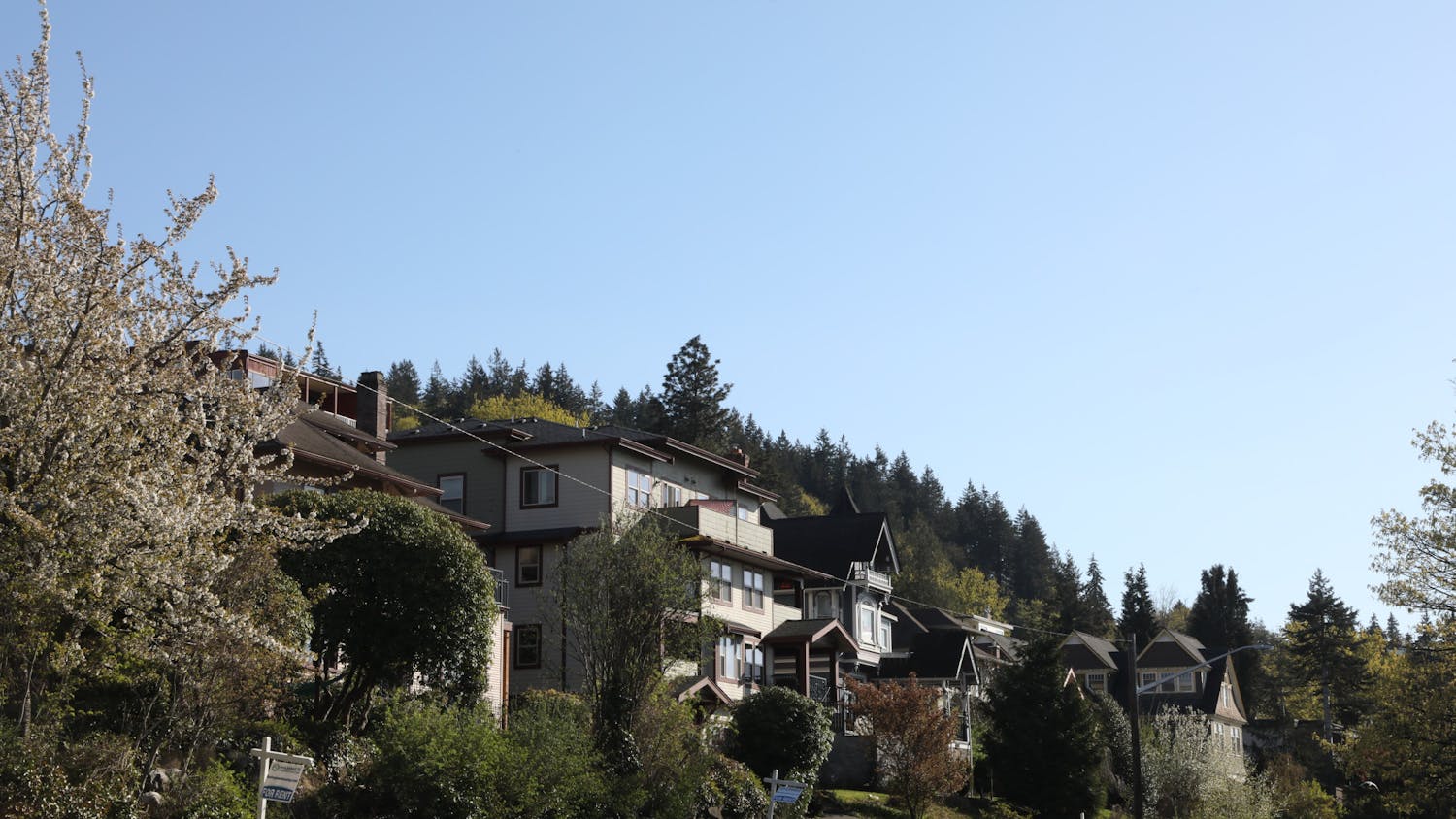
By Ian Ferguson
In a period of time spanning just over 150 years, European settlers trapped, shot and poisoned every last pack of gray wolves in Washington state. These wolves that had once roamed nearly every region in the state disappeared.
In 2008, nearly 80 years after their eradication, a new wolf pack was documented. Since then the population of wolves has increased by an average of 23% each year, according to the Washington Department of Fish and Wildlife.
By the end of 2019 there were, at minimum, 145 confirmed wolves and 21 packs according to a report by the WDFW. The report claims the actual population number is likely higher.
Prior to western settlement, the gray wolf’s adaptability allowed it to thrive in the varying regions of Washington for thousands of years.
According to a report by the U.S Department of Fish and Wildlife, In the 1820s after European settlers had moved into Washington and established a fur trade, trapping of wolves for their pelts increased. Between 1821 and 1859, 14,810 wolf pelts were sold.
Additionally, conflicts prompted ranchers and settlers to shoot and poison wolves. In the summer of 1930 the last documented pack was killed in the forested regions of the Olympic Peninsula.
Their return has prompted many questions regarding how their newly established presence may affect the ecosystem. University of Washington conservation researcher, Samuel Wasser said the answer isn’t so simple.
But so far, Wasser said the wolves have been fitting well into the community.
In the nearly 80 years since the wolves were extirpated from the ecosystem, Wasser said the coyote populations have increased substantially.
“A lot of people don’t realize how much damage coyotes can actually do to the habitat,” Wasser said.
Wasser said coyotes are generalists, so they eat a wide diversity of prey. They also eat a lot of baby animals, he said, which can lead to adverse challenges for other predators in the food chain.
According to Wasser, in Yellowstone, as wolves began to recover so did the Pronghorn antelope. This was because the wolves were now regulating the coyote population, which preyed on Pronghorn fawns.
The reintroduction of the gray wolf could potentially regulate the number of coyotes — allowing for more baby animals reaching maturity — meaning more prey for both hunters and predators.
This process is referred to as trophic cascades, Wasser said — the ecological consequences of adding or removing a species from the food chain. As for the wolves’ cascade effect in Washington, the judgement is still out.
Unlike Yellowstone, in which the ecosystem was left practically untouched in the times the wolves were gone, Washington has gone through immense changes in its landscape — including human population increases, agricultural land increases and the minimization of wildlands.
While the prevalence of ecological impacts are still in question, the impacts of wolves for cattle ranchers in northeastern Washington have been clearly reported.
In 2019, WDFW reported that 14 cattle were killed by wolf attacks, with an additional 11 injured cattle. When a specific pack has attacked cattle repeatedly, the department may decide to kill a wolf from that pack as a measure to prevent future attacks. In 2019, the department removed nine wolves due to livestock deaths.
Since their return, conservation groups, activists and ranchers have quarrelled over the management of this issue.
Sophia Ressler, the Washington wildlife advocate for the Center for Biological Diversity has been openly critical about the department's handling of wolf depredation.
“We want to see people be able to coexist with an animal that has been on this landscape for much, much longer than humans have been here,” Ressler said.
Ressler said the goal is to eventually see zero state lead killings of wolves, giving them the best opportunity for recovery.
Jay Shepherd, coordinator for Conservation Northwest’s Wolf Program, said the current “stronghold” for Washington wolves is in northeastern Washington counties.
He said cattle depredation is a significant issue in these counties.
“It's the issue that is kind of driving a wedge between the cultural divide that we have in Washington, rural versus urban,” Shepherd said.
Shepherd said wolves can be a polarizing species. On one polar spectrum are advocacy groups, who advocate for conservation and recovery at all costs. On the other side are ranchers, and people living with the wolves, who’s livestock and financial stability may take a hit at the consequence of wolves.
“I think we need to work together on them, instead of just pointing fingers,” Shepherd said.
One of the ways Shepherd and Conservation Northwest have worked to accomplish this is by advocating for non-lethal measures of cattle protection — specifically using a technique called range riding.
A range rider will ride with the cattle, either on horseback or all terrain vehicles, to keep watch on their herd. Range riding is the primary method of preventing wolf attacks when cattle move into wolf inhabited areas.
“Before wolves were extirpated from the lower 48, there were a lot of people watching cattle on horse,” he said. “It was the way.”
Shepherd said this is not a fool-proof method. The goal is not to eliminate wolf-livestock conflict, but reduce it to the point where ranching stays viable.
He said if wolves do continue to recover, and begin to inhabit the whole state, a level of social tolerance for the wolves will be required.
“I think people are going to have to be patient, this is a hard process,” Shepherd said. “We just have a culturally diverse state and people are going to have to kind of recognize other people's point of views and find some common ground.”





